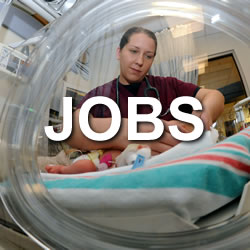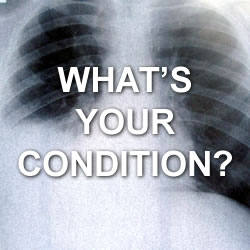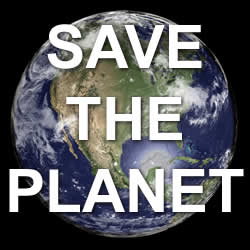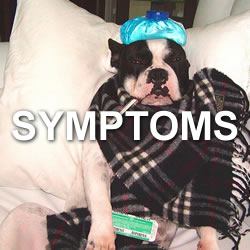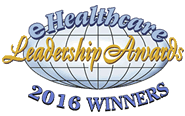Pesticides
When God created the Garden of Eden, She didn’t use synthetic fertilizers, pesticides, herbicides and GMO apples ― Khang Kijarro Nguyen

image by: Women on Farms Project
HWN Suggests
The Pesticides on Your Produce Aren't Safe
In 1962 Rachel Carson published Silent Spring, an exposé of the long-term health and environmental damage caused by chemical pesticides. Since then, pesticides have been regulated to a greater or lesser degree, and government bodies like the Environmental Protection Agency in the US have been created to oversee implementation. Yet despite this progress, much of what Carson wrote then still applies.
The most notorious pesticides sprayed in the 1960s may no longer be in use, but in many cases they have simply been replaced with others. Although the names and properties have changed, pesticides are still very much with us.
Glyphosate, for example, is one of the…
Resources
 Shopper’s Guide to Pesticides in Produce
Shopper’s Guide to Pesticides in Produce
The health benefits of a diet rich in fruits and vegetables outweigh the risks of pesticide exposure. Use EWG's Shopper's Guide to Pesticides™ to reduce your exposures as much as possible, but eating conventionally-grown produce is far better than not eating fruits and vegetables at all. The Shopper's Guide to Pesticides in Produce™ will help you determine which fruits and vegetables have the most pesticide residues and are the most important to buy organic. You can lower your pesticide intake by avoiding the 12 most contaminated fruits and vegetables and choosing the least contaminated produce.
 Sick Of Pesticides? Remember Death In The Time Of Cholera.
Sick Of Pesticides? Remember Death In The Time Of Cholera.
Pesticides tend to receive little else but bad press — bees are slain, lawsuits are filed, and proponents of everything from ‘raw water’ to ‘clean food’ cite the benefits of all that is ‘natural’. Yet pesticides are vital to human health, nutrition, and global food security. Simply put, we cannot live without them. When we hear the word pesticide, we might think of neonicotinoid-based insecticides linked with the demise of bees in Europe. Or we might remember the days of DDT and the unintended effects of the widespread use of this harmful and toxic environmental pollutant. We may look to the vilification of companies such as Monsanto, as they seek to defend glyphosate from a litany of questionable accusations regarding human health.
 A Revolution in Brittany: Mayors Defy French State to Ban Pesticides
A Revolution in Brittany: Mayors Defy French State to Ban Pesticides
If France is going through an ecological awakening, its spiritual center may be here in Langouët, a quiet village in Brittany, where the environmentalist mayor has become a folk hero to fellow small-town officials all over the country.
 How Pesticide Companies Corrupted the EPA
How Pesticide Companies Corrupted the EPA
Interviews with more than two dozen experts on pesticide regulation — including 14 who worked at the EPA’s Office of Pesticide Programs, or OPP — described a federal environmental agency that is often unable to stand up to the intense pressures from powerful agrochemical companies, which spend tens of millions of dollars on lobbying each year and employ many former EPA scientists once they leave the agency. The enormous corporate influence has weakened and, in some cases, shut down the meaningful regulation of pesticides in the U.S. and left the country’s residents exposed to levels of dangerous chemicals not tolerated in many other nations.
 Pesticide testing is flawed—and it’s harming our birds and bees
Pesticide testing is flawed—and it’s harming our birds and bees
Computer modeling of both chemicals and the organisms affected by them can help farmers make better choices.
 Pesticides and Produce: The Problem With the EWG's 'Dirty Dozen'
Pesticides and Produce: The Problem With the EWG's 'Dirty Dozen'
EVERY YEAR, THE Environmental Working Group releases its list of the "Dirty Dozen," or the 12 fruits and vegetables available in the U.S. that have the most pesticide residues. The media publicizes the list and unfortunately scares some folks out of enjoying Mother Nature's finest. As a registered dietitian, I beg you: Don't let this list prevent you from eating fruits and veggies. I'd rather you stress over the weather – or, even more threatening, the Red Sox bullpen – than panic over produce.
 California Judge Halts Pesticide Spraying Program
California Judge Halts Pesticide Spraying Program
A California judge has ruled that a state pesticide spraying program must end because it did not fully consider the impacts on public health or warn people of those risks. The ruling was issued by the Superior Court of California – County of Sacramento May 19 in response to a lawsuit brought by the City of Berkeley and 11 environmental and public health groups, including the Environmental Working Group (EWG).
 Chemicals on our food: When “safe” may not really be safe
Chemicals on our food: When “safe” may not really be safe
Weed killers in wheat crackers and cereals, insecticides in apple juice and a mix of multiple pesticides in spinach, string beans and other veggies – all are part of the daily diets of many Americans. For decades, federal officials have declared tiny traces of these contaminants to be safe. But a new wave of scientific scrutiny is challenging those assertions.
 EPA Rejects Ban On Common Pesticide Linked to Brain Damage in Children
EPA Rejects Ban On Common Pesticide Linked to Brain Damage in Children
The Environmental Protection Agency on Thursday said it would not ban chlorpyrifos, a pesticide used for killing insects, citing a lack of scientific evidence and drawing ire from environmental groups that say it could cause harm to the children of women who are exposed to the pesticide when pregnant. While the agency banned the indoor use of chlorpyrifos in 2000, the chemical is still widely used in the agricultural industry to protect crops, especially corn, from insects.
 New Evidence Shows Popular Pesticides Could Cause Unintended Harm To Insects
New Evidence Shows Popular Pesticides Could Cause Unintended Harm To Insects
Neonicotinoids are deadly to a wide range of insects, but they are relatively safe for people and other mammals; much safer, for instance, than an older family of insecticides called organophosphates. In recent years, farmers have rapidly increased their use of neonics. Most corn and soybean seeds that are planted in the United States now come pre-coated with them. Another study published this week argues that this shift has made American agriculture dramatically more toxic for insects.
 Pesticides explained: the toxic chemicals in up to 70% of produce
Pesticides explained: the toxic chemicals in up to 70% of produce
Studies have linked long-term health issues, while regulators insist breaches of safe limits are rare.
 The Organic Industry Is Lying to You
The Organic Industry Is Lying to You
Pesticides are by definition toxic, and many organic pesticides pose significant environmental and human health risks. One is copper sulfate, a widely used broad-spectrum organic pesticide that persists in soil and is the most common residue found in organic food. The European Union determined that copper sulfate may cause cancer and intended to ban it, but backed off because organic farmers don’t have any viable alternative.
How Has This Pesticide Not Been Banned?
Government scientists say chlorpyrifos is unsafe. And yet it’s still in use.
Organic Pesticides: Not An Oxymoron
It may seem counterintuitive, but foods that are grown to organic standards can contain commercially manufactured pesticides.
Should a Study on Pesticides Affect Our Use of Them?
Recent research, which found a link between pyrethroids and deaths from heart disease, highlights the limitations of epidemiological research.
The developing world is awash in pesticides. There may be a better way
In today’s globalized world, it is not inconceivable that one might drink coffee from Colombia in the morning, munch cashews from Vietnam for lunch, and gobble grains from Ethiopia for dinner. That we can enjoy these products is thanks, in large part, to expanded pesticide use across the developing world. Every year, some 3.5 billion kilograms (7.7 billion pounds) of pesticides — a catchall term for the herbicides, insecticides, and fungicides applied to crops from seed to harvest — are used to preserve the quality and quantity of fruits, vegetables, and grains. Herbicides, such as Monsanto’s weed killer glyphosate, make up the bulk of the pesticides applied worldwide.
Are pesticides killing all the honeybees? It's complicated
The US government, by contrast, is essentially saying that it's up to critics to prove that pesticides are harmful. After all, pesticides are a billion-dollar industry, crucial for many types of agriculture. And the neonicotinoids in question are less toxic to humans and other mammals than the pesticides they replaced — so it's not as if a ban would be entirely cost-free either. Ultimately, these are two different ways of dealing with ambiguous evidence that reflect two completely different approaches to regulation. And it's not clear who's right — though Europe's two-year ban may end up giving us some valuable info on neonicotinoids and honeybees.
Death by Mint Oil: Natural Pesticides
This summer, the pests around my house are dying of more natural causes. One colony of wasps on my deck got neutralized by shots of mint oil. The cabbageworms shredding my broccoli plants were done in by an ingredient culled from seeds of trees native to India. And I annihilated several fire-ant compounds by enticing them to eat bait packed with a soil-dwelling bacterium that fried their tiny nervous systems.
Food Safety - What's On Your Plate?
So what's in your food besides additives that we should be concerned about?
GeoMedicine - OK, Maybe We Should Move!
GeoMedicine will probably serve as a catalyst for future human migration from one part of the globe to another in the quest for minimizing personal health risks. And, it may be sooner than you think!
Neonicotinoid pesticides found in honey from every continent
The evidence has been mounting for years that the world’s most widely used pesticides, neonicotinoids, harm bees and other pollinating insects. Now it seems the problem isn’t limited to Europe and North America, where the alarm was first sounded. It’s everywhere.
The hidden reason American minorities are so much more likely to have diabetes
One major reason black and Latino people are disproportionately exposed to toxic chemicals is also clear: Race is the single biggest indicator in the US of whether you live near toxic waste and pollution. Often that pollution includes endocrine disruptors, including PCBs, phthalates, certain pesticides. Even particulate-matter air pollution can contain endocrine-disrupting chemicals.
The Toxins That Threaten Our Brains
Leading scientists recently identified a dozen chemicals as being responsible for widespread behavioral and cognitive problems. But the scope of the chemical dangers in our environment is likely even greater. Why children and the poor are most susceptible to neurotoxic exposure that may be costing the U.S. billions of dollars and immeasurable peace of mind.
Will Better Science Help Protect Us from Chemical Exposures?
A new National Academy of Sciences' risk assessment could accelerate public health protection from pesticides.
Yes, You Are Definitely Ingesting Pesticides. Here's Why It's Not A Problem
Organic uses pesticides. Sometimes they are indeed less toxic. Sometimes they are 100% identical to non-organic: the organic farmers just paid more for the organic certification that lets them charge higher prices. Sometimes they are far, far more toxic!
A locust plague hit East Africa. The pesticide solution may have dire consequences.
Designed to kill, pesticides are toxic by definition, but they are also blunt weapons. Three of the four chemicals recommended by the FAO and authorized by regional governments—chlorpyrifos, fenitrothion, and malathion—are broad-spectrum organophosphates, widely used pesticides sometimes referred to as “junior-strength nerve agents” because of their kinship to Sarin gas. The other, deltamethrin, is a synthetic pyrethroid, which is especially toxic to bees and fish, though much less so to mammals.
 The Pesticides on Your Produce Aren't Safe
The Pesticides on Your Produce Aren't Safe
The UN has accused the pesticide industry of “systematic denial” of health and environmental harms.
Rotterdam Convention
The objectives of the Convention are to promote shared responsibility and cooperative efforts among Parties in the international trade of certain hazardous chemicals in order to protect human health and the environment from potential harm and to contribute to the environmentally sound use of those hazardous chemicals, by facilitating information exchange about their characteristics.
Beyond Pesticides
Beyond Pesticides provides the public with useful information on pesticides and alternatives to their use. With this information, people can and do protect themselves and the environment from the potential adverse public health and environmental effects associated with the use and misuse of pesticides.
Compendium on Pesticide Common Names
This Compendium is believed to be the only place where all of the ISO-approved standard names of chemical pesticides are listed. It also includes approved names from national and international bodies for pesticides that do not have ISO names.
National Pesticide Information Center
NPIC fact sheets are designed to answer questions that are commonly asked by the general public about pesticides and pesticide related topics.
Pesticide Action Network
PAN North America, combines science and community-led campaigns to force global phase outs of highly hazardous pesticides. We promote solutions that protect the health of communities and the environment.
Pesticide Action Network UK
We promote healthy food, sustainable agriculture and an environment which will provide food and meet public health needs without dependence on toxic chemicals and without harm to food producers and agricultural workers.
Californians for Pesticide Reform
To improve and protect public health, sustainable agriculture, and environmental quality by building a movement across California that changes statewide pesticide policies and practices.
Drugs for Bugs
The Molecular Expressions Pesticides Collection contains over 50 common pesticides that have been recrystallized and photographed under the microscope. These are presented here to demonstrate the irony between the beautiful patterns generated by crystallized pesticides and the dangerous nature of their mechanism of action.
Northwest Center for Alternatives to Pesticides
The Northwest Center for Alternatives to Pesticides (NCAP) works to protect community and environmental health and inspire the use of ecologically sound solutions to reduce the use of pesticides.
Biocides1.com
Biocides1.com is the international portal for worldwide Biocides Industry. This portal is an active business-to-business website for all Biocide Suppliers and their products like Biocides. We bring companies worldwide together and give them opportunities to increase their international business.
Canadian Association of Physicians for the Environment
Pesticides are among the most widely used chemicals in the world, and also among the most dangerous to human health. They are a leading cause of poisonings here in Canada.
EPA
Pesticide Links and Quick Finder.
Health and Safety Executive
Over the last 60 years farmers and growers have changed the way they produce food in order to meet the expectations of consumers, supermarkets and Governments. In doing so they have made many changes to the way they farm. This often includes the use of pesticides.
Pharm Solutions
Welcome to the Next Generation of Pesticides, including insecticides, miticides, fungicides and foliar feeders. We say next generation because the enormous ground swell of opinion among gardeners and growers is to move away from toxic chemicals, their exposure, dangers and difficulty of use.
WHO
This page provides links to descriptions of activities, reports, news and events, as well as contacts and cooperating partners in the various WHO programmes and offices working on this topic.

Introducing Stitches!
Your Path to Meaningful Connections in the World of Health and Medicine
Connect, Collaborate, and Engage!
Coming Soon - Stitches, the innovative chat app from the creators of HWN. Join meaningful conversations on health and medical topics. Share text, images, and videos seamlessly. Connect directly within HWN's topic pages and articles.
